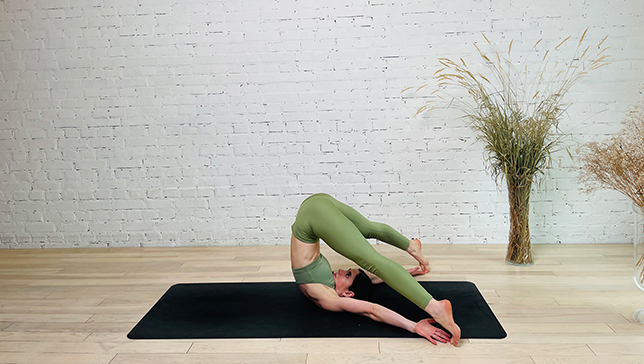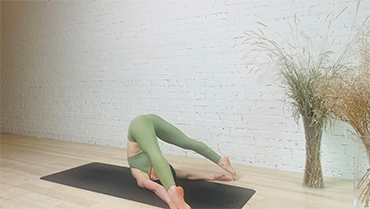Reclining Angle Pose - Supta Konasana

Contents
Reclining Angle Pose or Supta Konasana (suph-tha-kohn-AHS-anah) is an inverted restorative asana that is part of the primary series in Ashtanga yoga and is considered a variation of halasana. The name is derived from the Sanskrit, supta, meaning “sleeping” or “reclined,” and kona, meaning “angle.”
The goal is to maximally stretch your hamstrings. This is done in two ways: by pulling your legs apart and by lifting your hips high off the floor.
Supta konasana is believed to activate the visuddha (throat) chakra. This chakra is the center of communication and opening it stimulates authentic expression, faith and understanding.
Pose Detail
- Difficulty: Advanced, Intermediate
- By Type: Balancing Yoga Poses, Restorative Yoga Poses, Strengthening Yoga Poses
- Body Position: Forward Bend Yoga Poses, Supine Yoga Poses
- By Benefit: Yoga Poses For Stress Relief
Step-by-Step Instructions
Benefits and Contraindications
Stimulates the abdominal organs, promoting better digestion and elimination
Relieves stress and anxiety by calming the mind and promoting relaxation
Strengthens the back
Stretches the shoulders and spine
Stretches the inner thighs and groin muscles, which can help improve flexibility and reduce tightness in the hips
Knee injuries
High blood pressure
Lower back injuries
Pregnancy in the later stages
Photo poses in different angles

Modifications and Props for Beginners
- If you have difficulty reaching the ground with your feet, you can place a folded blanket or bolster under your knees to support them.
- If you have lower back pain or discomfort, you can place a bolster or pillow under your lower back to provide support and reduce strain on the lumbar spine.
Useful Tips
- Take your time getting into the pose, allowing your body to slowly release into the stretch.
- Focus on your breath and try to deepen your inhales and exhales.
- Relax your shoulders and neck, allowing your upper body to sink into the ground.
- If you feel any pain or discomfort, back off or come out of the pose.
- Stay in the pose for 5-10 minutes to fully benefit from the stretch and relaxation.
Frequently Asked Questions
You can hold Reslining Angel Pose or Supta Konasana for as long as you like, but it is recommended to hold the pose for at least 1-2 minutes to experience the benefits.
Reslining Angel Pose or Supta Konasana is generally safe for most people, but it is not recommended for those with hip or knee injuries. If you have any concerns, it is always best to consult with a qualified yoga instructor or healthcare provider.
Variations
- Reclined Butterfly Pose
- Supported Reclining Angle Pose
- Wall-supported Reclining Angle Pose